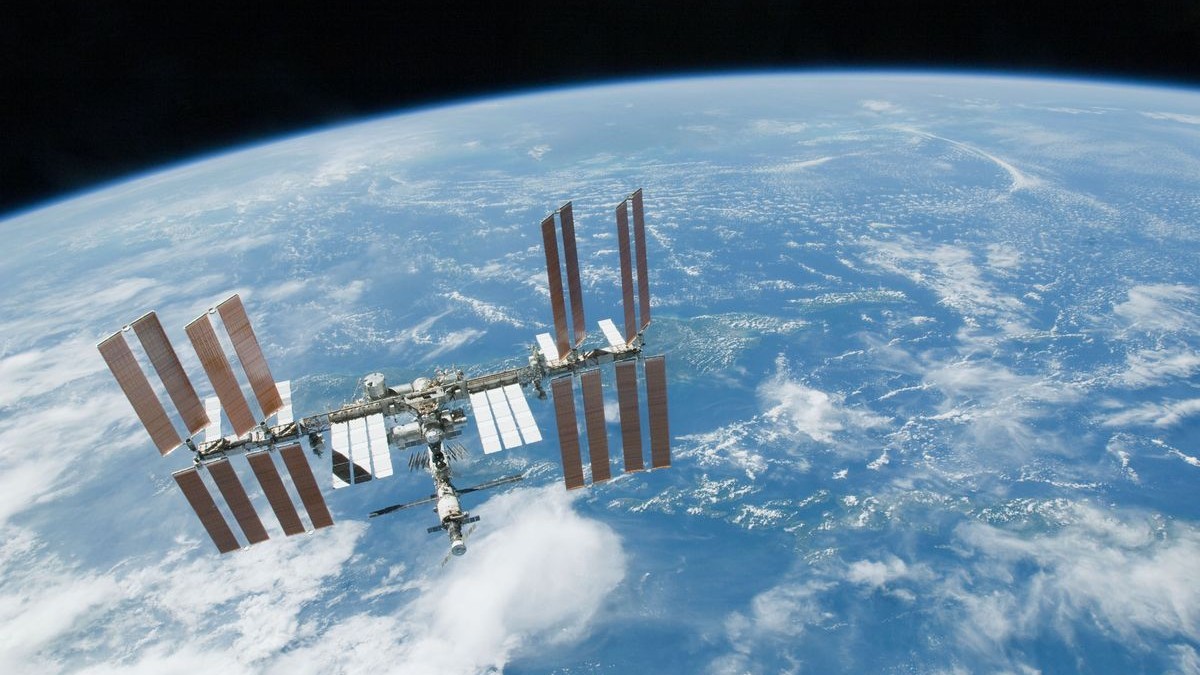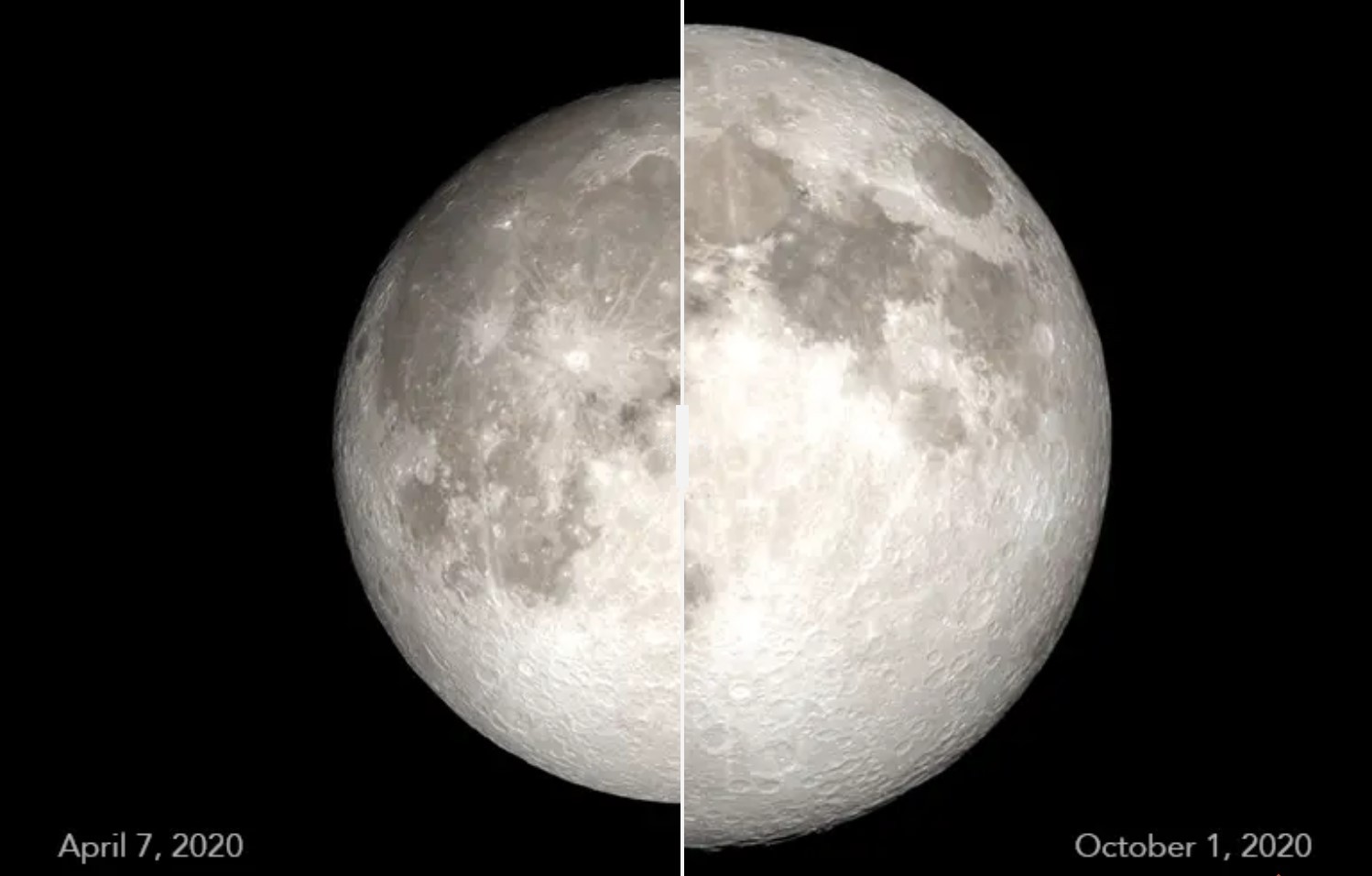ISS could 'drift down' for a year before SpaceX vehicle destroys it in Earth's atmosphere
Bringing down a huge space complex will take time.

Though the International Space Station is meant to be replaced in the 2030s, it will take a long time for the orbiting lab to officially reach the end of its life, NASA says.
SpaceX's newly commissioned reentry vehicle will only push the International Space Station (ISS) into Earth's atmosphere some 12 to 18 months after the complex "drifts down" from its normal orbit. "We'll leave the crew on board as long as possible, so they're available to help maintain station and keep it healthy," NASA's Dana Weigel, ISS program manager, told reporters today (July 17) in a livestreamed briefing of the reentry plan.
"Our plan is for [the astronauts] to leave about six months before the final reentry, as ISS reaches about 220 kilometers [136 miles]," Weigel said, explaining that's as low as human vehicles are typically rated to fly. For comparison, the typical ISS orbit is 250 miles (400 km) above Earth.
NASA selected the deorbit vehicle last month, saying that it will award up to $843 million to SpaceX for development (that figure does not include launch costs). The choice comes after NASA asked the aerospace community for proposals in March 2023, then again in September 2023, for a "space tug," or "U.S. deorbit vehicle (USDV)," concept that can bring down the U.S. sections of the ISS.
Related: NASA selects SpaceX to build deorbit vehicle for International Space Station
The SpaceX deorbit vehicle will be based upon the company's Dragon spacecraft design, which has sent cargo variants to the ISS since 2012 and launched crew to the lab since 2020. Of note will be an "enhanced trunk section" that will have additional tanks of propellant, along with engines, avionics, power generation and other matters customized for the complex mission, said Sarah Walker, director of Dragon mission management at SpaceX, in the same briefing.

"One of the benefits of leveraging Dragon's rich flight history is that we can continue to use NASA-certified hardware for a number of the key systems, like the docking system," she said. "While the assembly level design is uniquely developed to this mission," she added, "we intentionally use building blocks of components that NASA is familiar with and that SpaceX has extensive experience building and operating."
Get the Space.com Newsletter
Breaking space news, the latest updates on rocket launches, skywatching events and more!
SpaceX is the dominant player in ISS operations. The company, created by billionaire Elon Musk, benefits from vertical integration (possessing much of the supply chain needed for space launches) in a way that the competition does not. Not only does SpaceX launch both crew and cargo to the ISS, but it's also bankrolled by NASA for a Starship contract to land astronauts on the moon. (The Starship contract is behind schedule and one of the reasons the first human lunar landing in over 50 years was delayed a year to 2025, at the least, as NASA wants "a significant number" of successful launches of Starship before bringing astronauts on board.)
SpaceX also brings to space lucrative satellite missions that are funded by the military and the U.S. government, and launches it own Starlink broadband satellites several times a month aboard SpaceX's Falcon 9 rocket, one of the most reliable launch vehicles in the world. (Falcon 9 is grounded for the moment following a rare launch failure, although SpaceX is hoping the Federal Aviation Administration will allow it to launch again while the mandatory mishap investigation continues.)
Related: SpaceX Falcon 9 rocket failure forces NASA to evaluate astronaut launch schedule for ISS

SpaceX's approach to the ISS deorbit vehicle was praised in the official source selection document released on government procurement website SAM.gov on Tuesday (July 16). "SpaceX's approach considerably increases the likelihood of producing a highly reliable USDV, minimizes new development and testing, and reduces the risk to the government of late delivery of the USDV and greatly enhances the potential for successful contract performance," the document stated.
Northrop Grumman (NG), a major SpaceX competitor that currently launches cargo missions for the ISS, had a higher total cost for the project. The document added it was "particularly concerning" that NG's space tug idea may not work with certain "solar beta" angles. (These angles are between the ISS's orbit in space and an imaginary line connecting the sun and the Earth, according to NASA.)
"With this weakness, NASA is faced with having to choose between a potentially lengthy and costly redesign of the NG system that would allow NASA more flexibility when scheduling the ISS deorbit operations, or the launch of a USDV that limits NASA's planned deorbit schedule," the source selection document noted.

At the moment, most of the ISS consortium has committed to operations until 2030, while Russia says it will stay until at least 2028. Russia is departing the consortium in the wake of the internationally condemned Ukraine war, an exit initiated without provocation in 2022. As most of the world pulled contracts out of Russia's launch business, it pivoted to China and North Korea, oft-cited in Congressional testimony as countries with security risks to the U.S.
NASA officials have emphasized that the ISS end date depends on when new commercial station replacements, funded by the agency, will be ready. "We want [the commercial stations] to be supportive, and then when they're ready to go, that's when ISS will move out of the way," Steve Stich, the manager of the commercial crew program at NASA's Johnson Space Center (JSC) in Houston, said in a briefing earlier this year.
And there's financial and policy reasons to keep experiments running on the U.S. side as long as possible, at least as far as lawmakers are concerned. Tiangong, a Chinese space station, could take over much of the lucrative low-Earth orbit market if the U.S. lets the ISS go early, Congress warned earlier this year. NASA is prohibited from engaging in bilateral agreements or coordination with China under a 2011 directive from Congress known as the Wolf amendment.
A clutch of companies are building commercial outposts at the moment. Axiom Space plans to put modules on the ISS before detaching them into a free-flying set known as Axiom Station.
Other independent stations are in the works, too. Orbital Reef includes Amazon, Boeing, Blue Origin and Sierra Space; the Voyager Space-led Starlab complex has participation from Lockheed Martin and Northrop Grumman; and Vast Space expects to launch the first Haven-1 module to space in 2025.
Join our Space Forums to keep talking space on the latest missions, night sky and more! And if you have a news tip, correction or comment, let us know at: community@space.com.

Elizabeth Howell (she/her), Ph.D., was a staff writer in the spaceflight channel between 2022 and 2024 specializing in Canadian space news. She was contributing writer for Space.com for 10 years from 2012 to 2024. Elizabeth's reporting includes multiple exclusives with the White House, leading world coverage about a lost-and-found space tomato on the International Space Station, witnessing five human spaceflight launches on two continents, flying parabolic, working inside a spacesuit, and participating in a simulated Mars mission. Her latest book, "Why Am I Taller?" (ECW Press, 2022) is co-written with astronaut Dave Williams.









